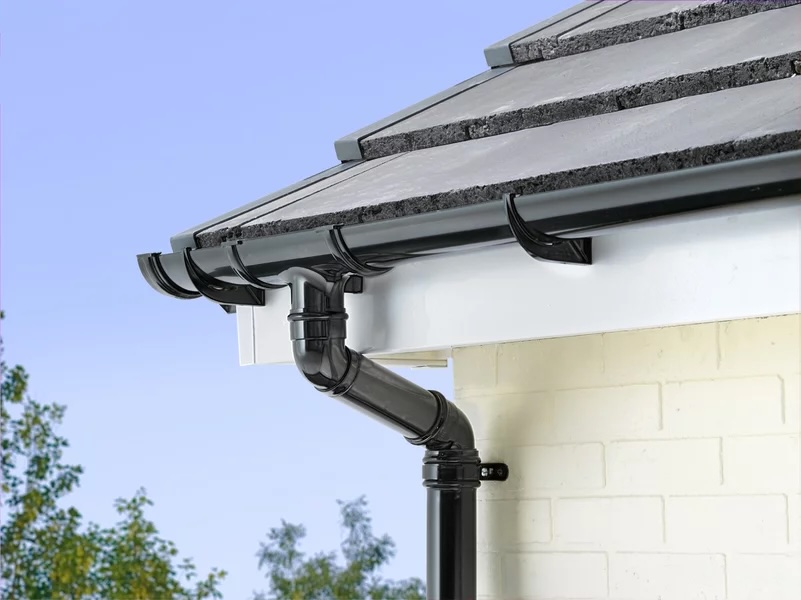
Gutter System
Add a review FollowOverview
-
Founded Date March 23, 1983
-
Sectors Real Estate & Property
-
Posted Jobs 0
-
Viewed 12
Company Description
Where Can You Find The Top Downspouts Information?
Understanding Downspouts: Importance, Types, and Maintenance
Downspouts are a necessary element of any roof, serving a critical function in the general water management of a home. They funnel rainwater far from the roof and reroute it to the ground or a drainage system, avoiding damage to both the building structure and the surrounding landscape. This post will look into the significance of downspouts, the various types available, essential maintenance ideas, and common FAQs regarding their performance.
The Importance of Downspouts
Properly working downspouts offer a number of benefits, including:
- Water Damage Prevention: By directing water away from the foundation, downspouts assist mitigate the danger of basement flooding, mold growth, and structural damage.
- Disintegration Control: Downspouts prevent soil disintegration, which can be destructive to gardens and landscaping. Controlled drainage keeps soil in location and turf healthy.
- Structure Preservation: A well-functioning drainage system safeguards the integrity of a building’s foundation, extending the lifespan of the home.
- Enhancing Curb Appeal: While functioning primarily for drainage, aesthetically pleasing downspouts can improve the total appearance of a property.
Table 1: Key Benefits of Downspouts
| Advantage | Description |
|---|---|
| Water Damage Prevention | Lowers threat of flooding and mold development by directing water far from the structure. |
| Erosion Control | Avoids soil washout and safeguards garden areas. |
| Foundation Preservation | Keeps the structural integrity of the building. |
| Enhancing Curb Appeal | Can be created to match the aesthetic of the property. |
Kinds of Downspouts
When thinking about the installation or replacement of downspouts, it is vital to understand the different types readily available. The most common types consist of:
1. Material Types
- Aluminum Downspouts: Lightweight and resistant to rust. Aluminum is a popular choice for both residential and commercial homes due to its toughness and range of color alternatives.
- Vinyl Downspouts: Cost-effective and simple to set up, vinyl is resistant to deterioration however might not hold up also in extreme temperature levels.
- Copper Downspouts: Known for their aesthetic appeal and durability, copper downspouts establish an unique patina with time, including character to the residential or commercial property.
- Steel Downspouts: Extremely strong and resilient however vulnerable to rust without correct treatment. Galvanized alternatives can alleviate this threat.
2. Forming Types
- Round Downspouts: These provide a modern appearance, frequently used in modern-day architectural designs.
- Square and Rectangular Downspouts: More conventional in appearance, these shapes provide greater capacity for managing larger volumes of water.
3. Practical Types
- Conventional Downspouts: Standard systems that bring water straight from the gutters to the ground.
- Filtered Downspouts: Equipped with structure to filter particles, these downspouts assist prevent clogging in heavy rain scenarios.
- Extending Downspouts: Extensions or additional pipes that direct water further far from the structure, supplying enhanced drainage in problem areas.
Table 2: Comparison of Downspout Types
| Material | Pros | Cons |
|---|---|---|
| Aluminum | Light-weight, rust-resistant | Can dent easily |
| Vinyl | Affordable, simple to set up | Less long lasting in extreme conditions |
| Copper | Visual appeal, long lasting | More expensive |
| Steel | Very strong | Prone to rust |
Maintenance Tips for Downspouts
To ensure that downspouts remain effective, it is crucial to perform routine maintenance. Here are some essential pointers for upkeep:
- Regular Cleaning: Remove debris from the downspout and the surrounding location to avoid blockages. This is particularly essential after heavy rainfall or storms.
- Inspections: Periodically inspect downspouts for damage, rust, or indications of wear. Search for cracks and check connections to the gutters.
- Clear the Exit Point: Ensure that the area where the downspout empties is clear of obstructions to permit appropriate water flow.
- Change Water Flow: If water pools near the structure, think about including extensions or rerouting downspouts to securely channel water farther from the structure.
- Check Downspout Alignment: Ensure downspouts are effectively lined up for reliable water flow. Misaligned downspouts may impede their performance.
Table 3: Maintenance Checklist for Downspouts
| Task | Frequency | Description |
|---|---|---|
| Tidy Debris | Seasonal (Spring/Fall) | Remove leaves, twigs, and dirt from downspouts. |
| Check for Damage | Annually | Look for fractures, rust, and misalignments. |
| Clear Exit Points | After heavy rains | Ensure water streams easily from downspouts. |
| Change Flow if Needed | As required | Reroute downspouts if water pools near foundation. |
| Screen During Storms | After significant storms | Examine for blocking or overflow. |
Frequently asked questions About Downspouts
1. How frequently should I clean my downspouts?
Cleaning downspouts should be carried out a minimum of twice a year, ideally in the spring and fall. More frequent cleaning may be needed in locations with substantial tree cover or following heavy storms.
2. Can I install downspouts myself?
Yes, many property owners select to set up downspouts as a DIY task. However, it is necessary to follow manufacturer standards and local building regulations to make sure proper installation.
3. What should I do if my downspout is clogged?
If you suspect a blockage, thoroughly remove the downspout and clear any particles. You can utilize a plumbing professional’s snake or a high-pressure water hose to clear stubborn clogs.
4. Are there policies on downspouts?
In many areas, local building regulations determine specific requirements for downspout installation. Constantly seek advice from local codes or a professional before installation.

5. Do I require a drainage system together with downspouts?
It depends on elements such as your property’s topography and soil composition. In specific cases, a professional drainage system may be essential for optimum water management.
Downspouts play a pivotal role in maintaining a structure’s integrity and securing its surroundings from water damage. Comprehending the numerous types, their advantages, and how to maintain them can assist homeowners make notified decisions. By prioritizing proper installation and regular maintenance, home owners can enhance their landscapes and secure their homes against water-related issues. As such, downspouts ought to not merely be viewed as functional fixtures but important components of every structure’s long-term health.

